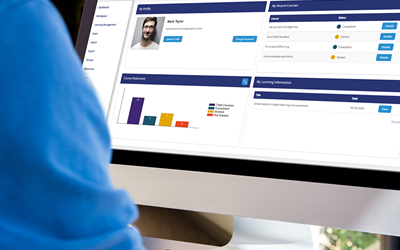What the Evidence Says About Digital Learning
eLearning systems are becoming more and more important in training, education, and business. Organisations need to keep their employees up to date with new skills, clients want the best service possible, and governments need to maintain an educated workforce that can compete in a globalised economy. The way people learn is changing rapidly, with the rise of technologies such as eLearning, it is increasingly possible to deliver effective learning resources to any location and at any time.
Posted 21 January 2022
What Works in Digital Learning
According to the Institute for Employment Studies (IES), the evidence about ‘what works’ in digital learning shows mixed results. However, there are some reasonably robust conclusions that can be drawn from the available studies to date.
- eLearning that is good quality can be just as effective as traditional in-person learning, with most studies finding little or no difference in the learning outcomes achieved.
- Blended learning - a blend of both synchronous and asynchronous learning - can be a powerful instructional strategy. By combining the best of both worlds, you're giving your learners more choice and flexibility, and allowing them to better fit their own schedules into the learning process. Students can access content whenever and wherever they choose, which provides an effective way to extend your course into their lives. It also saves learners time because they don't have to travel to class or wait until class time to get started on something they learned earlier in the week or month.
- Digital learning has been shown to require less time for learning than traditional classroom learning, because learners can study at their own pace. This can reduce the burden on learners who have busy schedules and need to study on their own schedule.
- A digital space provides learners with a greater degree of control over the learning experience, enabling them to focus on the most relevant personal material. Retention of learning is improved in a digital setting, even if completion rates are generally found to be lower.
- Evidence shows that digital learning can lead to significant returns on investment. The University of Maryland achieved an 8.8% improvement in overall recall accuracy using virtual reality (VR) and the US Navy found that immersive learning yielded $4.24 million in avoided costs, yielding an ROI of $2.96 million on a $1.28 million investment.
Content and Technology Alignment
An important lesson from research on face-to-face versus online learning appear to be that it is important to appropriately align the digital delivery method (or use of technologies) with the learning content to achieve effective learning outcomes. Matching content, tools and learners appears to be critical, as indeed research shows it to be with more traditional methods.
Success Factors
The success factors in eLearning design and development as identified by IES and CIPD are linked to three areas: the design of online learning programmes, provision of support, and learner engagement.
- In the design of eLearning programmes, the most important factor identified by research is the provision of an easy-to-use digital platform, with searchable content and compatibility across devices. Providing clear learning objectives, social interaction in some form in the learning and practical experience are also considered important.
- The successful development and delivery of online programmes requires appropriate support. It requires planning at the outset to ensure that there is sufficient guidance and support to allow learners to successfully engage with learning opportunities via digital media. This support may be provided throughout a programme, or at different stages of its lifecycle to ensure that learners have a well-informed experience that leads directly towards achieving their goals.
- eLearning design and development should also include actions that have been proven to boost learner engagement, including promoting the benefits of online learning, enabling and empowering learners, establishing achievable goals, recognising the learning in a way that is valued by learners, and personalising content.
Conclusion
Creating successful digital learning programmes is not easy. eCom can help you improve or expand your vision for your digital learning programmes easily and affordably. With over 25 years of experience, eCom Learning Solutions is trusted by numerous organisations where creativity, rigour, and client engagement are the keystones of success. Get in touch today or email connect@ecomlearningsolutions.com.
Recent Posts
eCom Learning Solutions: Staying ahead in a constantly evolving landscapeIs your work changing, or just your tools? A question for the modern workforce
What is competency? And why it matters in the workplace
Bridging the integrity gap: A proactive approach with eNetEnterprise
Proving Learning Works: Trends Driving Workplace Training in 2025


